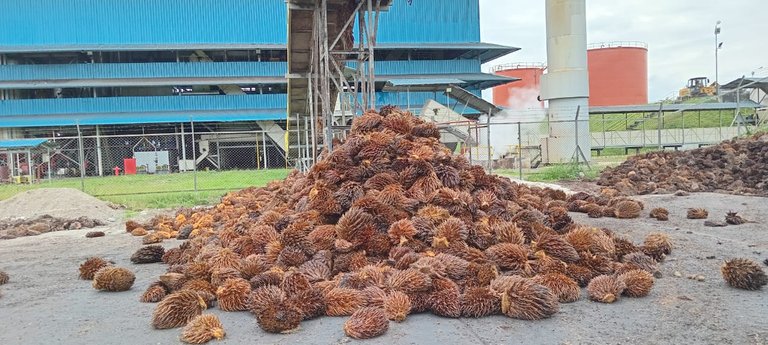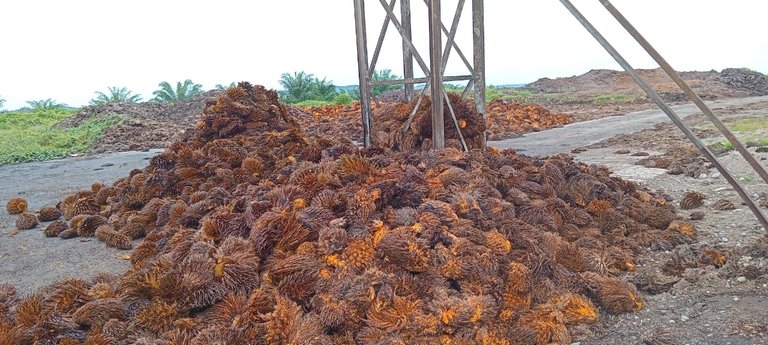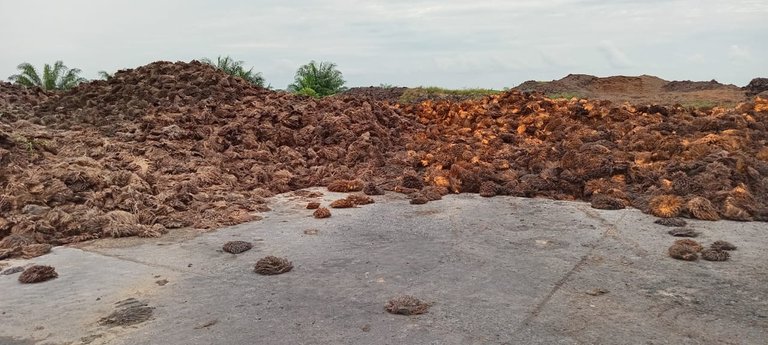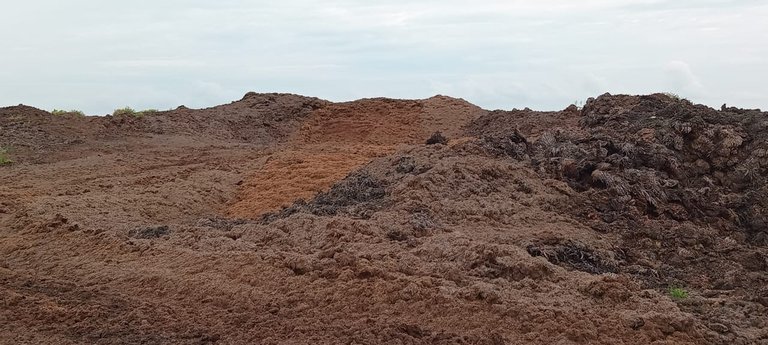Utilization of empty stems as a fertilizer substitute for oil palm plants
On this occasion I would like to share some more photos that I took earlier at a palm oil factory, Satiaagung.
I will discuss the benefits of palm oil waste or empty palm stalks, which can be processed into organic fertilizer for palm oil farmers.
Technological and industrial advances are used by humans to improve the quality of their lives. It has been proven that technological and industrial progress is synonymous with progress in the quality of human life. So this progress has a positive impact on the quality of human life. But on the other hand, humans are afraid of the environmental pollution it causes. This can be understood because if the environment is polluted, nature's carrying capacity for human life will be disrupted. Waste generated from a process is controlled as far as possible from resources by reducing the waste produced, reusing waste and recycling waste. Empty fruit bunches/leaves waste is the waste with the largest volume from the Fresh Fruit Bunches (FFB) processing process at Palm Oil factories, reaching 21% of the FFB processed. This waste will increase along with the increase in production capacity of processed FFB. The increase in waste volume creates new problems for the environment, especially the emergence of pollution into the environment and waste processing which causes quite a lot of costs. Organic empty fruit bunches/cantilever waste containing 1.5% Nitrogen, 0.5% phosphate, 7.3% Potassium and 0.9% magnesium has quite large potential to be used as a fertilizer substitute by applying the waste to the soil around the oil palm plantations. Utilizing empty oil palm fruit bunches/cantilever waste can reduce the cost of purchasing organic fertilizer by up to 60% with optimum production of Fresh Fruit Bunches (FFB). From this use, the production costs of Fresh Fruit Bunches can be reduced significantly and environmental problems that arise in palm oil mills can be overcome without incurring costs and can even gain benefits in terms of costs. Apart from the benefits, the costs of controlling waste generated from industry can be handled without causing pollution to the environment because the waste can be handled at the source.


The fertilizer that must be carried out by oil palm plantations is empty fruit bunches, because the empty fruit bunches produced are very large, namely 20% of the fresh fruit bunches (FFB) of the oil palm processed. A palm oil factory with a processing capacity of 45 tons/hour or able to process an average of 900 tons of FFB per day will be able to produce 180 tons/day of empty fruit stalks.



If the factory has an incinerator that has received permission from the Environmental Service, the empty stalks will be burned and can produce 10% of the stalk ash or 18 tons per day which can be used as fertilizer for oil palm plants.
The empty stalks produced at 180 tons/day can be used as fertilizer in oil palm plantations with a dose of empty stalks of 35 tons/ha in oil palm plantations, so the area that can be fertilized is 5 Ha/day or 1,500 Ha/year if utilization is 100%. Usually the utilization is 85% or the same as fertilizing empty fields which can be done on an area of 1,275 Ha/year.
This potential is very large and must be exploited by oil palm plantations because if it is not exploited it will become a waste problem for factories and plantations, namely: prone to fires, a source of pests and disease and reducing the neatness of plantations as well as violating environmental laws.
It once happened that a large company did not use the empty plantations in the field or burned them in the incinerator, so after many years the pile of empty plantations grew to a height that exceeded the factory building.
These conditions encourage an increase in attacks by dangerous pests in oil palm plantations, namely the horn beetle (Oryctes rhinoceros). Finally, because the conditions were very urgent and dangerous for this oil palm plantation, an incinerator permit was arranged and the empty plantations were then burned and sown in the field and within 2 years the empty plantations were under control.